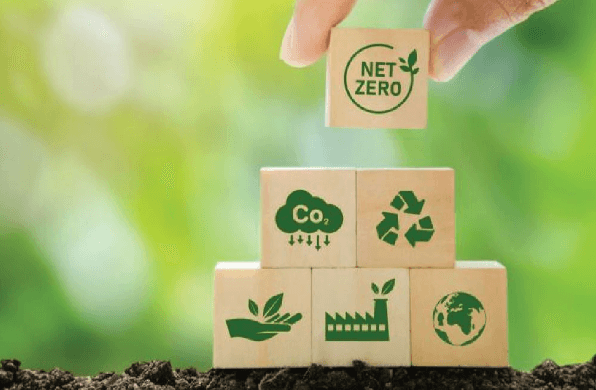What are the latest developments in sustainable technology and how are they helping to combat climate change?

Introduction
In the face of escalating climate change, sustainable technology has emerged as a beacon of hope. From renewable energy innovations to advancements in eco-friendly transportation, the latest developments in sustainable technology are revolutionizing our approach to combating climate change. This article explores these cutting-edge technologies and their profound impact on our planet.
Renewable Energy Innovations
Renewable energy is at the forefront of sustainable technology, offering cleaner alternatives to fossil fuels. Recent advancements in solar, wind, and hydroelectric power are pivotal in reducing carbon emissions. Solar panels, for example, have become more efficient and affordable, making solar energy accessible to a broader audience. Wind turbines are now larger and more powerful, generating more energy from fewer installations. Additionally, innovations in hydroelectric power harness the energy of flowing water with minimal environmental impact.
Advancements in Solar Technology
Solar technology has seen remarkable progress in recent years. Perovskite solar cells, a new type of solar material, promise higher efficiency at lower costs. These cells can be integrated into various surfaces, including windows and roofs, transforming buildings into energy generators. Furthermore, solar storage solutions, such as advanced batteries, allow for the capture and use of solar energy even when the sun isn’t shining, ensuring a consistent power supply.
Breakthroughs in Wind Energy
Wind energy technology has also experienced significant advancements. Modern wind turbines are designed with longer blades and higher towers, capturing more wind energy and converting it into electricity. Offshore wind farms, located in ocean waters, benefit from stronger and more consistent winds, increasing energy production. These developments make wind energy a more viable and reliable source of renewable power.
Hydroelectric Power Innovations
Hydroelectric power, one of the oldest forms of renewable energy, continues to evolve. Innovations such as small-scale hydro systems and low-impact hydro technologies minimize the ecological disruption typically associated with large dams. Additionally, pumped-storage hydroelectricity, which stores excess energy and releases it during peak demand, enhances grid stability and efficiency.
Energy Storage Solutions
Effective energy storage is crucial for the widespread adoption of renewable energy. Advances in battery technology, particularly lithium-ion and solid-state batteries, have significantly improved energy storage capacity and lifespan. These batteries power everything from electric vehicles to home energy systems, facilitating a more flexible and resilient energy grid.
Development of Solid-State Batteries
Solid-state batteries represent a major leap in energy storage. Unlike traditional lithium-ion batteries, solid-state batteries use solid electrolytes, which are safer and more efficient. They offer higher energy density, longer lifespans, and faster charging times. This technology is poised to revolutionize electric vehicles and renewable energy storage, making sustainable energy more practical and widespread.
Grid-Scale Battery Systems
Grid-scale battery systems are essential for balancing supply and demand in renewable energy grids. These large-scale batteries store surplus energy generated during periods of low demand and release it during peak times. This capability ensures a stable and reliable energy supply, even when renewable sources like solar and wind are intermittent.
Smart Grid Technologies
Smart grids incorporate advanced technologies to improve the efficiency, reliability, and sustainability of electricity distribution. By integrating renewable energy sources, smart grids enable better demand management and reduce energy waste. Innovations such as real-time monitoring, automated control systems, and predictive maintenance are transforming how we manage and distribute energy.
Electric and Hybrid Transportation
Transportation is a significant contributor to carbon emissions. The rise of electric and hybrid vehicles offers a cleaner alternative to traditional gasoline-powered cars. These vehicles produce zero or reduced emissions, contributing to improved air quality and reduced greenhouse gas emissions. Additionally, advancements in battery technology and charging infrastructure are making electric vehicles more accessible and convenient.
Advances in Electric Vehicle Technology
Electric vehicles (EVs) have made substantial progress, with longer driving ranges, faster charging times, and more affordable prices. Innovations such as wireless charging, regenerative braking, and advanced battery management systems are enhancing the performance and convenience of EVs. These improvements are driving widespread adoption and reducing our reliance on fossil fuels.
Hybrid Vehicles and Their Impact
Hybrid vehicles, which combine internal combustion engines with electric motors, offer a transitional solution toward fully electric transportation. They deliver better fuel efficiency and lower emissions compared to traditional vehicles. Plug-in hybrids, which can be charged from an external source, further reduce dependence on gasoline and promote the use of renewable energy.
Public Transportation Electrification
Electrifying public transportation systems, including buses, trains, and trams, is another critical step toward sustainable mobility. Electric public transit reduces urban air pollution and decreases greenhouse gas emissions. Innovations such as fast-charging stations and lightweight materials are making electric public transportation more feasible and attractive for cities worldwide.
Sustainable Building Technologies
Buildings are a major source of energy consumption and emissions. Sustainable building technologies aim to create more energy-efficient and environmentally friendly structures. These innovations include green building materials, energy-efficient appliances, and smart building systems that optimize energy use and reduce waste.
Green Building Materials
The use of green building materials, such as recycled steel, bamboo, and low-emission concrete, reduces the environmental impact of construction. These materials are sourced sustainably, have lower carbon footprints, and often provide better insulation, contributing to energy savings and improved indoor air quality.
Energy-Efficient Appliances
Energy-efficient appliances, from refrigerators to HVAC systems, play a crucial role in reducing energy consumption in buildings. Innovations in appliance technology have led to more efficient designs that use less electricity and water. Smart appliances that adjust their operation based on usage patterns and energy availability further enhance efficiency.
Smart Building Systems
Smart building systems use sensors, automation, and artificial intelligence to optimize energy use. These systems can control lighting, heating, cooling, and ventilation based on occupancy and weather conditions. By reducing energy waste and improving comfort, smart building technologies contribute to more sustainable and cost-effective building operations.
Water Conservation Technologies
Water scarcity is a growing concern worldwide. Sustainable water technologies aim to reduce water consumption and improve water management. Innovations such as efficient irrigation systems, water recycling, and desalination technologies are essential for conserving water resources and ensuring sustainable water supply.
Efficient Irrigation Systems
Efficient irrigation systems, including drip and precision irrigation, deliver water directly to plant roots, minimizing evaporation and runoff. These technologies help conserve water in agriculture, which is a major water-consuming sector. By optimizing water use, efficient irrigation contributes to sustainable farming practices.
Water Recycling and Reuse
Water recycling and reuse technologies treat wastewater for reuse in various applications, including agriculture, industrial processes, and even potable water supply. These technologies reduce the demand for fresh water and mitigate the environmental impact of wastewater discharge. Advanced filtration and treatment processes ensure the safety and quality of recycled water.
Desalination Technologies
Desalination technologies convert seawater into fresh water, providing a vital resource for arid regions and areas with limited freshwater availability. Innovations in desalination, such as reverse osmosis and solar desalination, are making the process more energy-efficient and cost-effective. These technologies offer sustainable solutions to global water scarcity.
Sustainable Agriculture Practices
Agriculture is a significant driver of deforestation, greenhouse gas emissions, and biodiversity loss. Sustainable agriculture practices aim to reduce the environmental impact of farming while maintaining productivity. Techniques such as regenerative agriculture, vertical farming, and precision agriculture are transforming the way we grow food.
Regenerative Agriculture
Regenerative agriculture focuses on restoring soil health, enhancing biodiversity, and sequestering carbon. Practices such as cover cropping, no-till farming, and agroforestry improve soil structure, increase organic matter, and capture carbon dioxide from the atmosphere. These techniques promote sustainable land use and reduce the environmental footprint of agriculture.
Vertical Farming Innovations
Vertical farming involves growing crops in stacked layers, often in controlled indoor environments. This method maximizes space use and reduces the need for pesticides and herbicides. Vertical farms can be located in urban areas, reducing transportation emissions and providing fresh produce to local communities. Advances in LED lighting and hydroponic systems are driving the growth of vertical farming.
Precision Agriculture Technologies
Precision agriculture uses data-driven techniques to optimize farming practices. Technologies such as GPS, sensors, and drones collect real-time data on soil conditions, crop health, and weather patterns. This information enables farmers to make informed decisions about irrigation, fertilization, and pest control, leading to more efficient and sustainable farming.
Carbon Capture and Storage
Carbon capture and storage (CCS) technologies capture carbon dioxide emissions from industrial processes and power plants and store them underground to prevent them from entering the atmosphere. These technologies are essential for reducing carbon emissions and mitigating climate change. Advances in CCS are making the process more efficient and cost-effective.
Direct Air Capture
Direct air capture (DAC) technology captures carbon dioxide directly from the atmosphere. DAC systems use chemical reactions to extract CO2 from the air, which is then stored or used in various applications. This technology offers a potential solution for removing excess carbon dioxide from the atmosphere and achieving negative emissions.
Enhanced Oil Recovery
Enhanced oil recovery (EOR) involves injecting captured CO2 into oil reservoirs to increase oil extraction. This process not only helps to produce more oil but also stores CO2 underground, reducing atmospheric emissions. EOR serves as a bridge technology, supporting the transition to a low-carbon economy.




